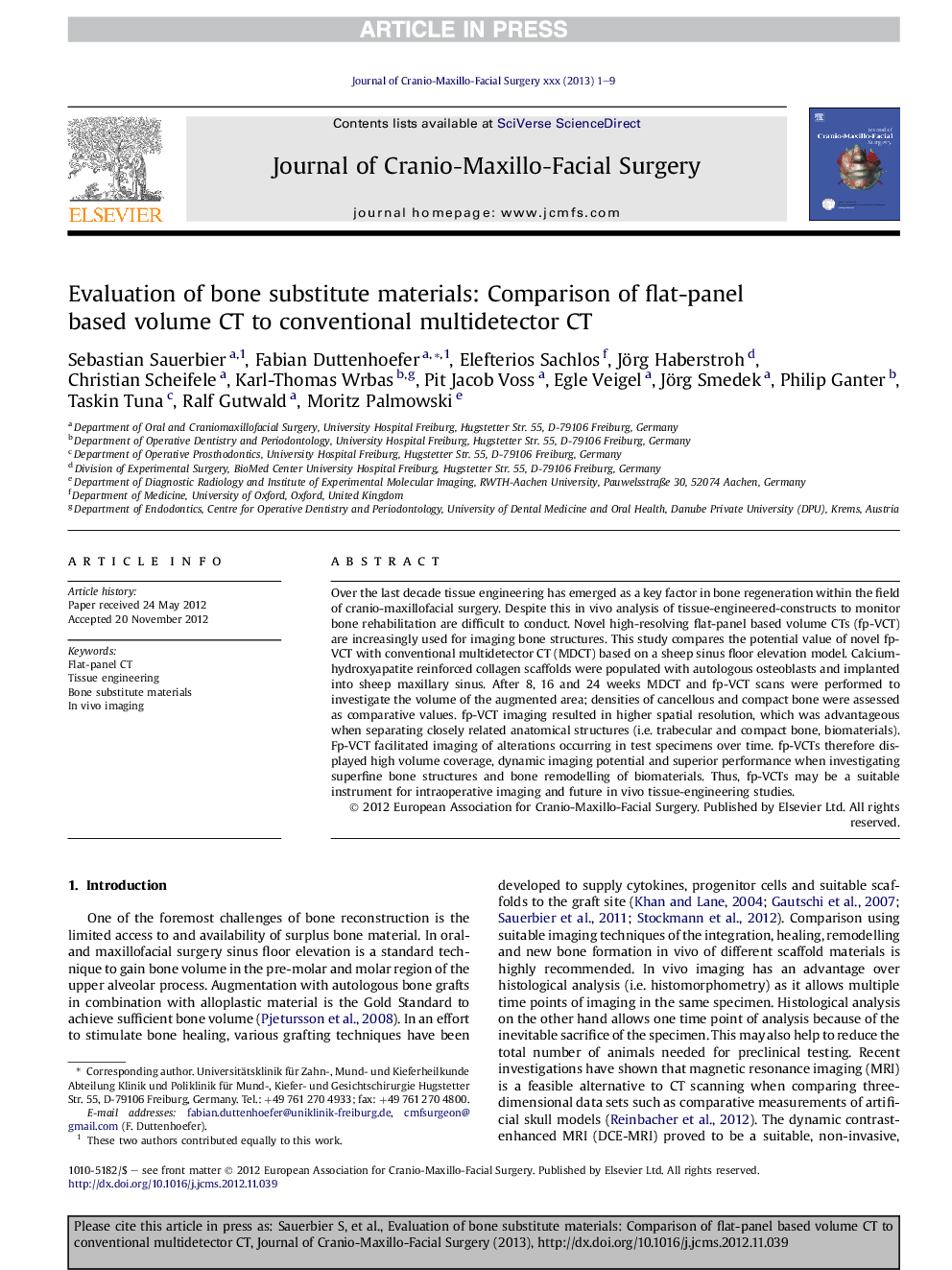| Article ID | Journal | Published Year | Pages | File Type |
|---|---|---|---|---|
| 6052915 | Journal of Cranio-Maxillofacial Surgery | 2013 | 9 Pages |
Abstract
Over the last decade tissue engineering has emerged as a key factor in bone regeneration within the field of cranio-maxillofacial surgery. Despite this in vivo analysis of tissue-engineered-constructs to monitor bone rehabilitation are difficult to conduct. Novel high-resolving flat-panel based volume CTs (fp-VCT) are increasingly used for imaging bone structures. This study compares the potential value of novel fp-VCT with conventional multidetector CT (MDCT) based on a sheep sinus floor elevation model. Calcium-hydroxyapatite reinforced collagen scaffolds were populated with autologous osteoblasts and implanted into sheep maxillary sinus. After 8, 16 and 24 weeks MDCT and fp-VCT scans were performed to investigate the volume of the augmented area; densities of cancellous and compact bone were assessed as comparative values. fp-VCT imaging resulted in higher spatial resolution, which was advantageous when separating closely related anatomical structures (i.e. trabecular and compact bone, biomaterials). Fp-VCT facilitated imaging of alterations occurring in test specimens over time. fp-VCTs therefore displayed high volume coverage, dynamic imaging potential and superior performance when investigating superfine bone structures and bone remodelling of biomaterials. Thus, fp-VCTs may be a suitable instrument for intraoperative imaging and future in vivo tissue-engineering studies.
Related Topics
Health Sciences
Medicine and Dentistry
Dentistry, Oral Surgery and Medicine
Authors
Sebastian Sauerbier, Fabian Duttenhoefer, Elefterios Sachlos, Jörg Haberstroh, Christian Scheifele, Karl-Thomas Wrbas, Pit Jacob Voss, Egle Veigel, Jörg Smedek, Philip Ganter, Taskin Tuna, Ralf Gutwald, Moritz Palmowski,
